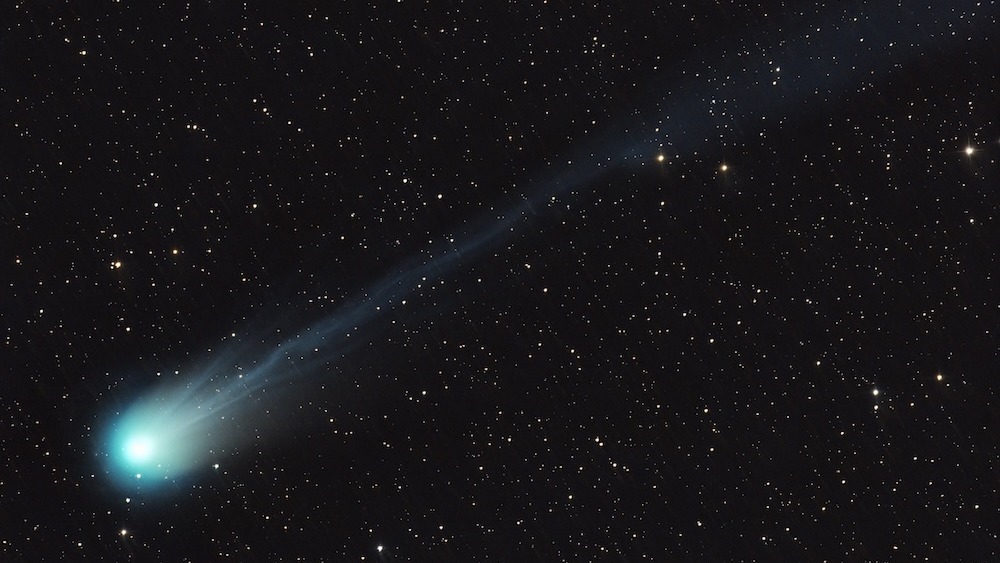Explosive green 'Mother of Dragons' comet now visible in the Northern Hemisphere
The green comet 12P/Pons-Brooks is now visible in the night sky in North America. Here's how to see it.

A rare, formerly-horned comet that astronomers have dubbed the "Mother of Dragons" is now visible after dusk in the Northern Hemisphere.
This "Halley-type" comet, officially known as Comet 12P/Pons-Brooks, completes a single orbit around the sun once every 71 years. The last time it passed by Earth was in 1954, according to a statement from the European Space Agency (ESA).
The city-size comet has a nucleus measuring 10.5 miles (17 kilometers) wide and orbits the sun in an elliptical shape. Recent observations of the comet have revealed a hidden spiral of light surrounding its frigid heart.
Like most comets, 12P/Pons-Brooks is composed of ice, dust and rock and its head also has a green appearance. This is due to comets containing diatomic carbon molecules — duos of carbon atoms stuck together — that emit emerald light when exposed to the sun.
However, what makes this celestial object stand out is that it's a cryvolcanic, or cold volcano comet, meaning that it regularly erupts, spewing the contents of its icy core into space, making the comet look brighter than normal. Last July, scientists spotted the comet erupting for the first time in 69 years, and at the time, it sprouted horns that earned it the nickname "devil comet."
The comet has erupted frequently since then, and has earned a reputation for its "spectacular outbursts of gas and dust," according to the ESA statement.
Get the world’s most fascinating discoveries delivered straight to your inbox.
Prior outbursts have made it appear as if the comet sported a pair of horns, likely due to a notch of ice or rock within the comet that split its frosty ejecta plume in two. The last few eruptions, however, have lacked this feature. ESA instead chose the "Mother of Dragons" moniker, as the comet is thought to be the parent body of the small "kappa-Draconids" meteor shower, which is active annually between Nov. 29 and Dec. 13.
On April 21, the comet will make its closest approach to the sun, USA Today reported, resulting in its brightest appearance in the sky.
The comet is expected to reach its closest point to Earth in June. However, at that point, it will no longer be visible in the Northern Hemisphere, ESA noted. The best time for Northern Hemisphere skywatchers to see it is early April, according to the agency's statement.
"The comet will brighten a bit as it gets closer to the sun, and it should be visible to the naked eye low in the west about an hour after sunset," Paul Chodas, manager of the Center for Near-Earth Object Studies, and Davide Farnocchia, a navigation engineer at NASA's Jet Propulsion Laboratory in Pasadena, California, told CNN in a joint email.
"You should go to a location away from city lights and with an unobstructed view of the western horizon," they suggested. "It would be advisable to use a pair of binoculars since the comet may be hard to locate without them."
Jennifer Nalewicki is former Live Science staff writer and Salt Lake City-based journalist whose work has been featured in The New York Times, Smithsonian Magazine, Scientific American, Popular Mechanics and more. She covers several science topics from planet Earth to paleontology and archaeology to health and culture. Prior to freelancing, Jennifer held an Editor role at Time Inc. Jennifer has a bachelor's degree in Journalism from The University of Texas at Austin.
